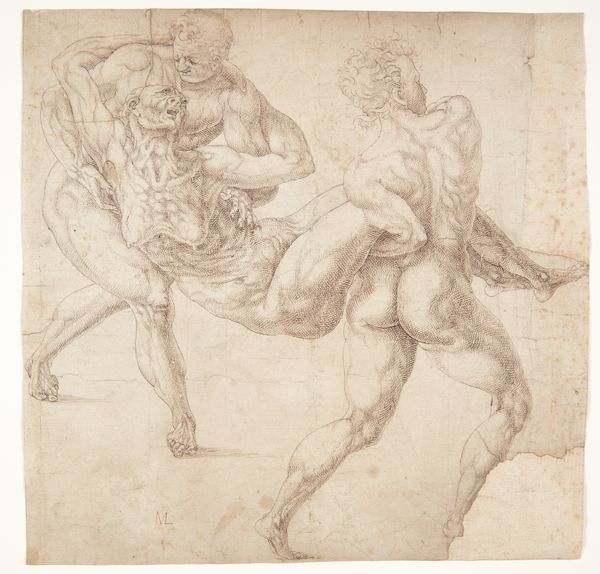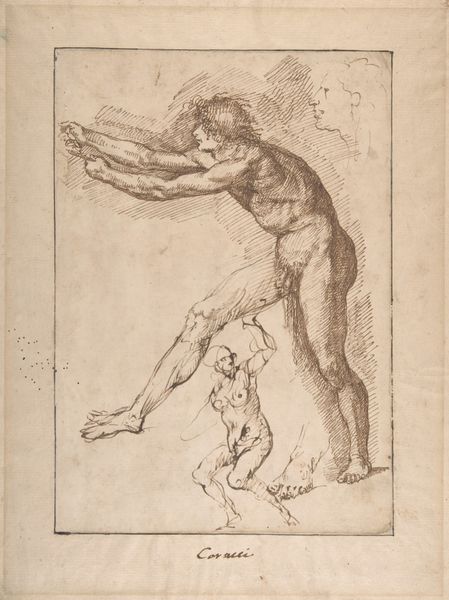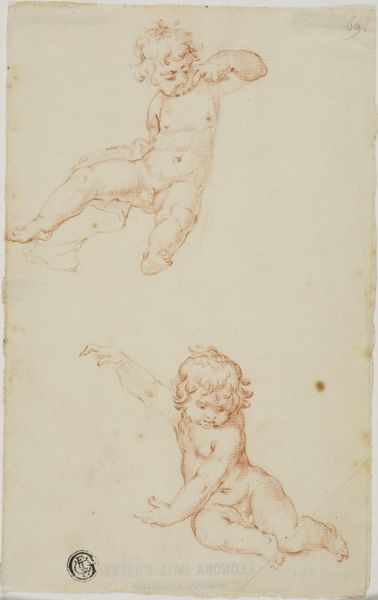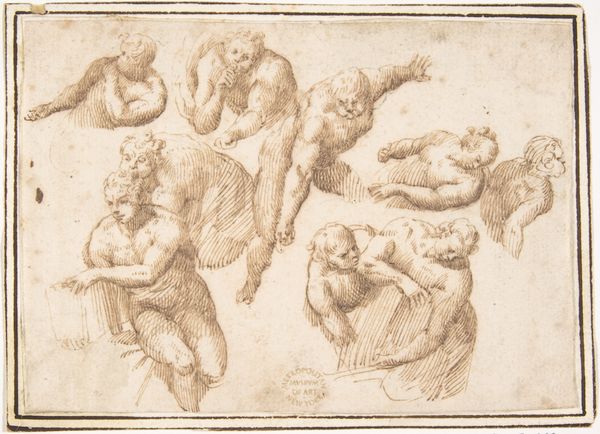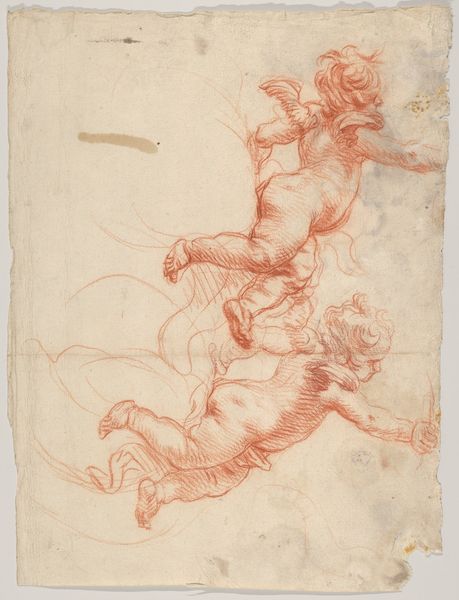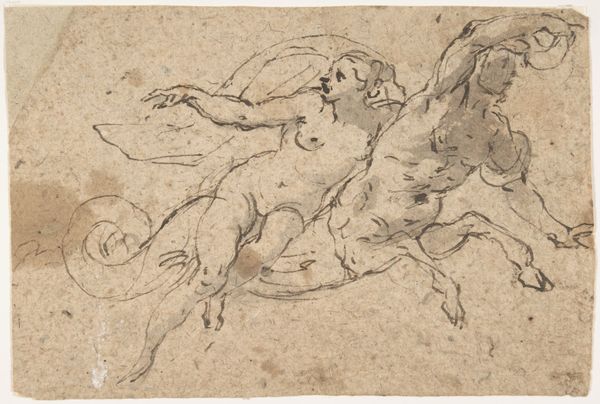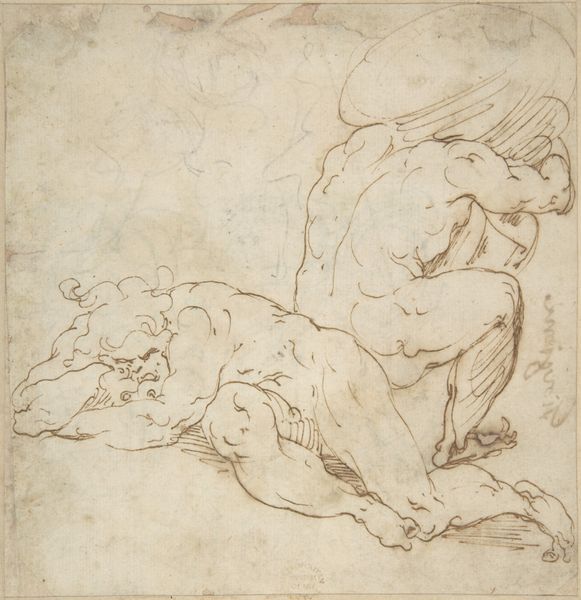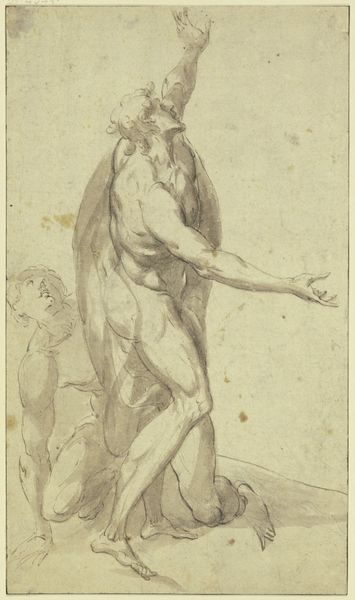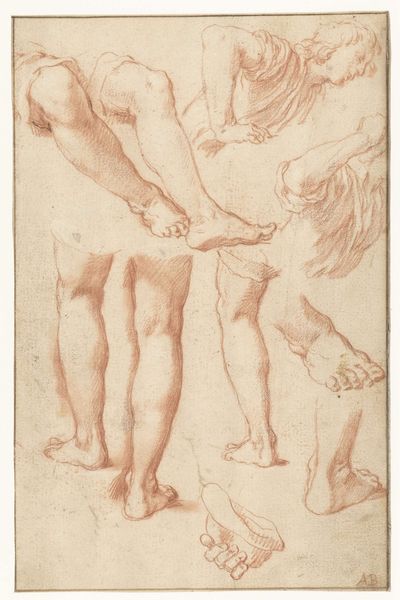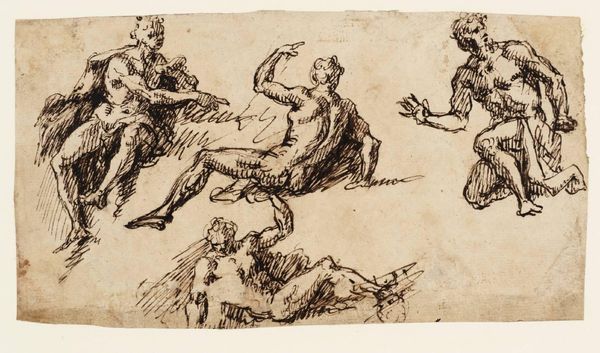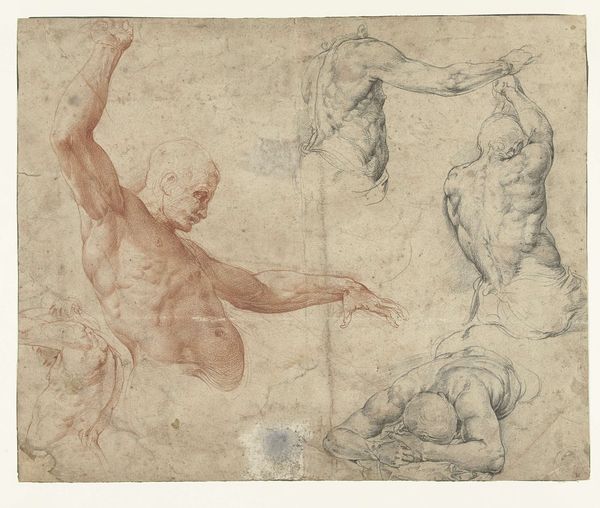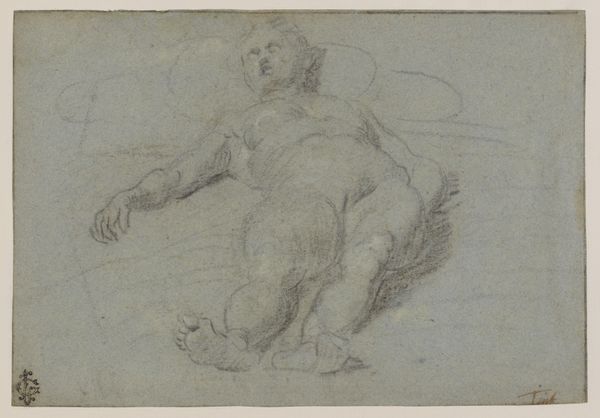
drawing, paper, ink
#
drawing
#
baroque
#
figuration
#
paper
#
ink
#
pencil drawing
#
14_17th-century
#
nude
Copyright: Public Domain
Curator: This is a study sheet, выполненный Anthony van Dyck. It is titled "Studienblatt: Zwei Engel und vier Hände", a piece rendered in ink on paper. Currently, it resides here at the Städel Museum. Editor: It's incredibly dynamic, almost as if these cherubic figures and hands are caught mid-gesture in some sort of theological game of charades. I find the use of line work really evokes a feeling of lightness and ethereal movement, in keeping with Baroque ideals. Curator: That's perceptive. Baroque artists aimed to capture dynamism and emotion, and van Dyck's quick strokes here are fascinating. Consider the historical context—studies like this were crucial in an artist's education and preparation for larger commissions, helping refine the understanding of anatomy and drapery. The museum system values that intimate step toward the sublime. Editor: Absolutely. I see the hands as an offering, almost a pleading, which links it deeply to ideas of faith. Four hands rather than two suggest repetition for emphasis, which might speak to Baroque culture's fascination with both religious display and its deep rooting in symbolic language. Angels symbolize intermediaries, of course, messengers, beings of divine favor. It's also interesting how disembodied they appear to be. Curator: That’s a key element here, their seeming disconnection. It allows us, as a 21st-century audience, a closer view. Rather than feeling overwhelmed by grand religious allegory, we get an atelier view, if you will. Editor: Yes! They lack any specific religious signifiers beyond their cherubic forms and nakedness which is often linked to divine innocence in religious iconography. Curator: And even then, the innocence and vulnerability here contrasts significantly with those found in other imagery circulated in seventeenth-century politics and religion. It reveals more of the person practicing the craft, in their atelier as you said, rather than what that crafted image is made to perform once shared publicly. Editor: I appreciate the chance to observe the development of gestures like these, which were likely essential in Van Dyck’s broader works and which also resonate across religious art and Baroque period paintings in general. The symbol feels like the seed to a fully fleshed symbolic representation. Curator: It brings us closer to the workshop practices that are still relevant today, helping us rethink museums as something besides spaces for fully finished or authorized artworks. Editor: Indeed. It's intriguing to peer into the preparatory process and extract new resonances out of fragments of symbolic practices, that we have come to recognize so deeply today.
Comments
No comments
Be the first to comment and join the conversation on the ultimate creative platform.

